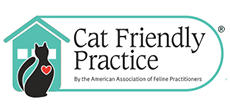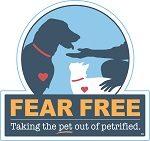Pudgy, overweight cats are cute, right? We give them nicknames like “butterball”, “pudgy” or “tubby”. However, while it may look cute, it can be detrimental to your cat’s health and well being over time. Overweight and obese cats are more prone to arthritis/mobility issues, breathing problems, heart disease, diabetes and bladder cancer. Overweight cats that develop diabetes need to receive insulin shots which can be very difficult and expensive for owners to manage. Other health problems may require medications and frequent vet visits. Luckily, most of these issues can be prevented or at least lessened with proper weight management.
The first step in creating a weight loss plan is to know how much your cat needs to lose to get to a healthy weight. Your veterinarian can tell you what your cat’s ideal weight is based on your cat’s body frame. Next, you will need to know your cat’s calorie requirements to get to a healthy weight and figure out how many calories your cat is currently getting. On average, depending on age and activity level, most cats require 24-35 calories per pound of body weight. A 10# cat requires approximately 250 calories per day. Dry cat food can vary depending on brand and formulation between 350 – 500 calories per cup. Canned food typically is 120-190 calories per 5.5 oz can. The number of calories in your cat’s food can usually be found via an internet search or contacting the company. It may or may not be listed on the package label.
To lose weight, the cat must consume less calories and/or exercise more to burn more calories. A combination of the two is going to be most effective. Cats can safely lose about 1.5% of their body weight per week. Weighing your cat weekly or bi-weekly can help track his/her progress. To reduce calories, you can reduce the amount of food given and/or reduce the amount of calories in the food being fed. This can be achieved by feeding a smaller amount, finding a food that is lower in calories per cup and/or feeding a greater portion of canned food versus dry. Make sure you are measuring the amount of food your cat is eating per day. On average, if eating only dry food, most cats require 1/3 to 1/2 cup of food per day. If canned food and treats are also given, the amount of dry food will need to be adjusted. Cut back amounts gradually to help your cat adjust to less food and if switching to a different food, make the switch slowly over several days or longer to help avoid GI upset. Feeding smaller, more frequent meals can help cats who always seem hungry. If you can find an automatic feeder that feeds small amounts frequently (the Ergo pet feeder can be set to dispense very small amounts of food up to 8 times per day) this can be helpful to re-train cats that beg from their humans for food. Because the feeder is now the source of food most cats learn to look to the feeder rather than beg from their owners. Cat food puzzles or food toys that need to be batted around to dispense food, can help slow food consumption and provide entertainment and enrichment for cats. Of course, limiting treats (or using a portion of your cat’s daily allotment of dry cat food as treats) will help reduce overall calorie consumption too.
Getting cats to exercise more can be a challenge, but it usually can be done with a little effort. New, interesting toys can encourage cats to play and exercise. Interactive toys that you can wiggle and entice your cat with can encourage play and exercise. Laser lights can get many cats to run and chase. Tossing pieces of dry food up or down stairs or across the room can stimulate your cat’s hunting instincts and get them to chase and “catch” their food. Providing cat towers and vertical spaces (cat shelves or cat walks) can encourage climbing and movement. Start slowly with exercise and strive for 2 or 3 play sessions of just a couple of minutes per day rather than trying to get your cat to play for 15 minutes at a time.
Many times, cats will start to become more active and playful as they get closer to a healthy weight. Just like people, being overweight can make them sluggish and tired. As extra pounds are shed you will likely see your cat become more energetic, interested in playing and more engaged because they feel better. Seeing them happier and knowing they are healthier makes the struggles of a weight loss plan worth it!




